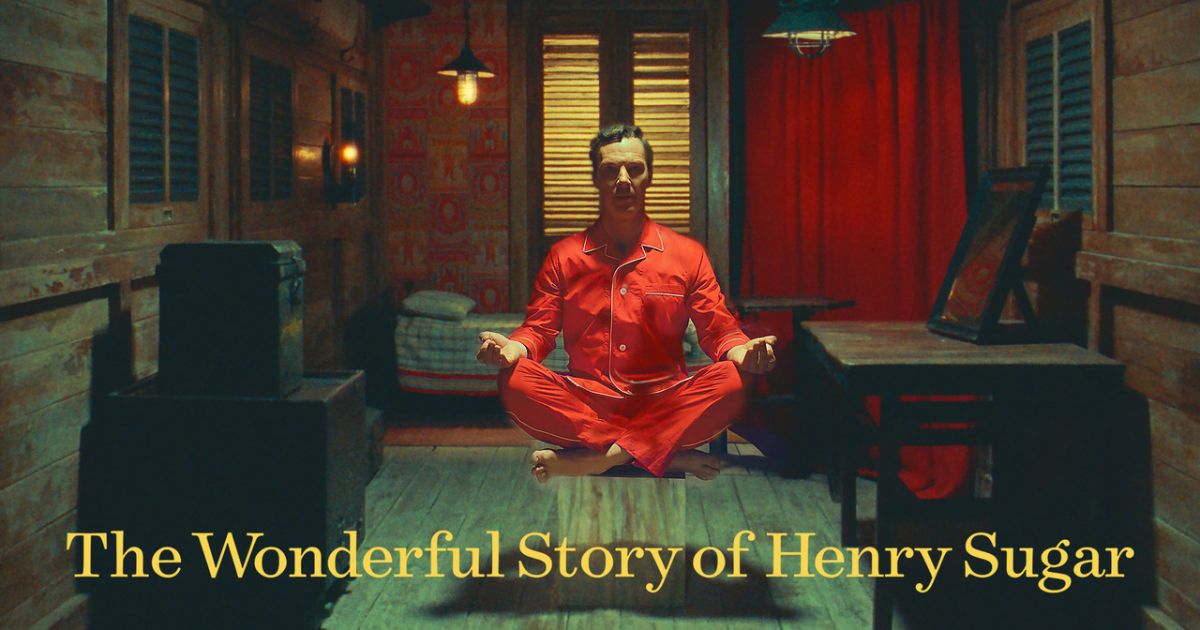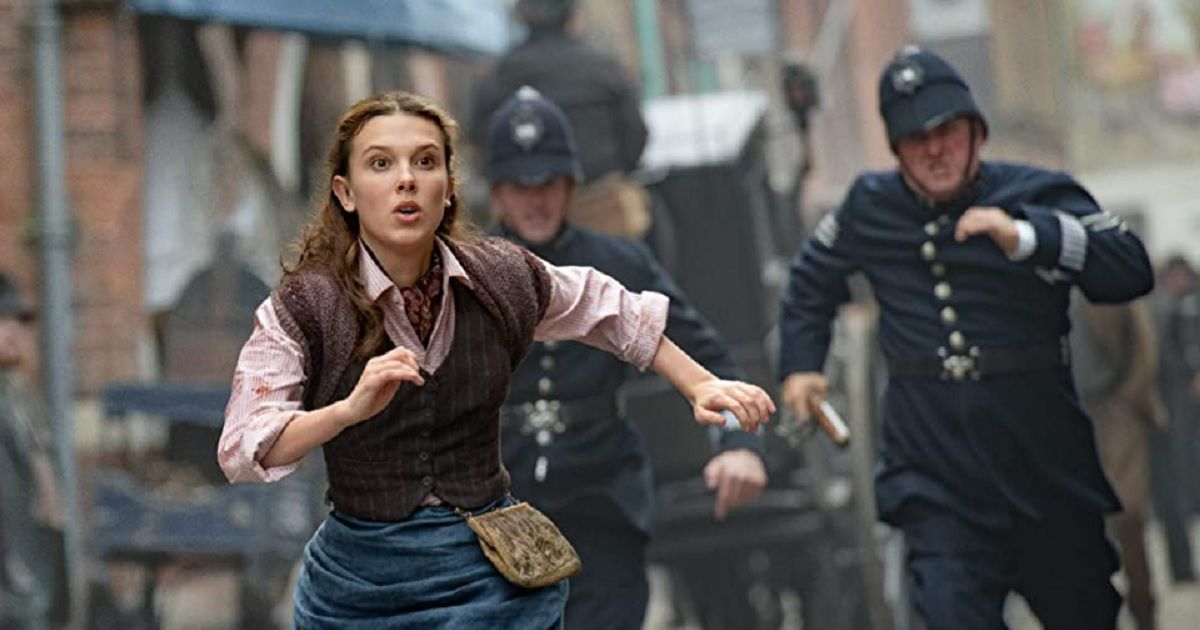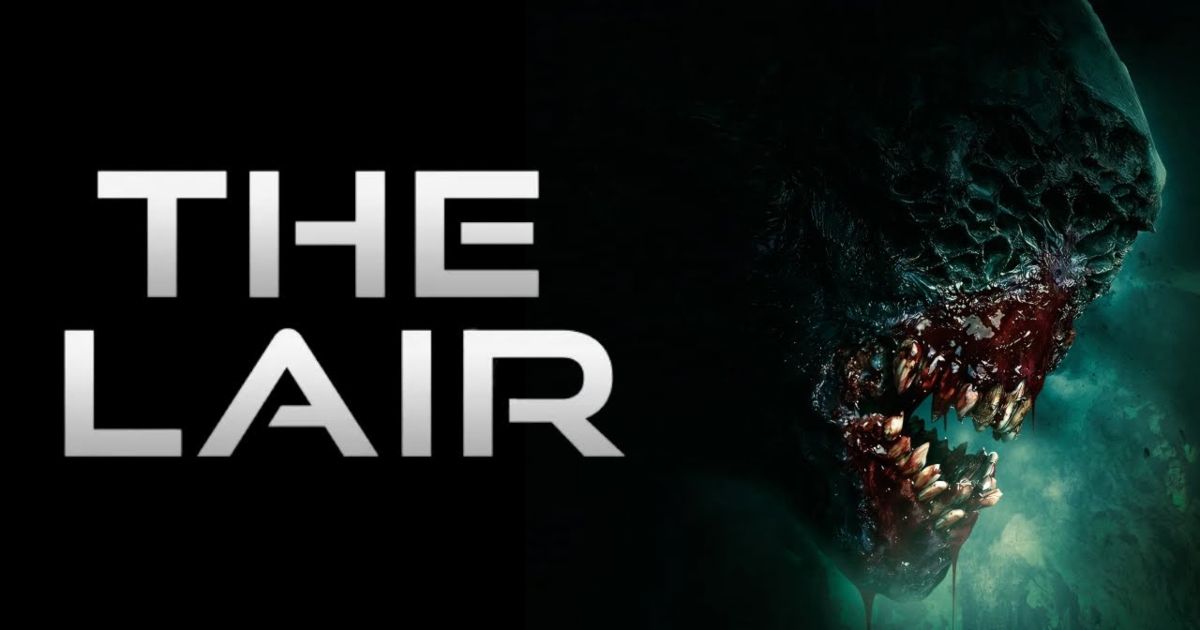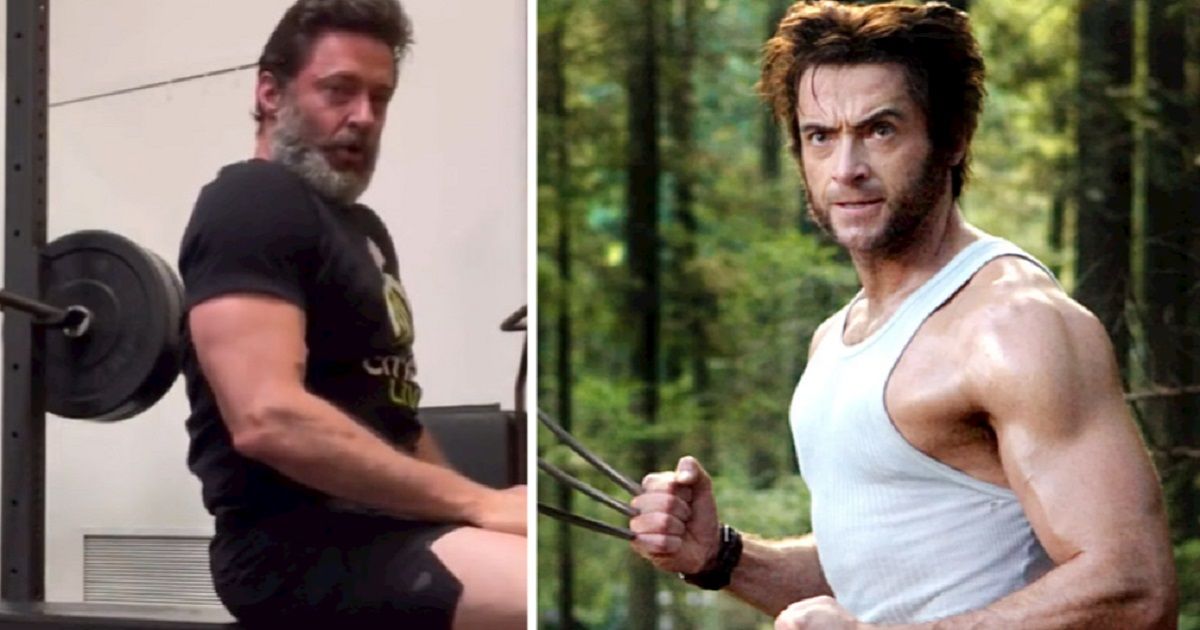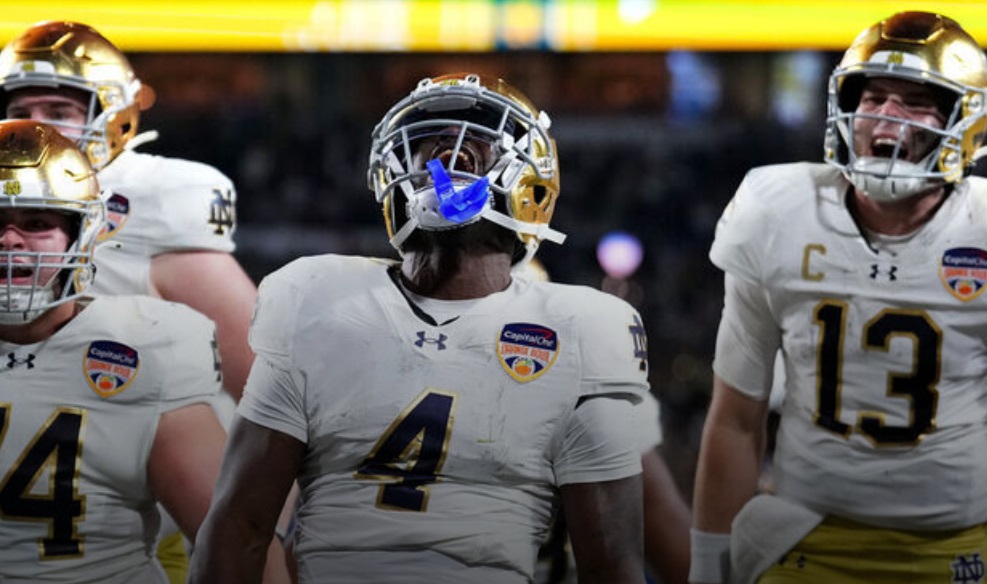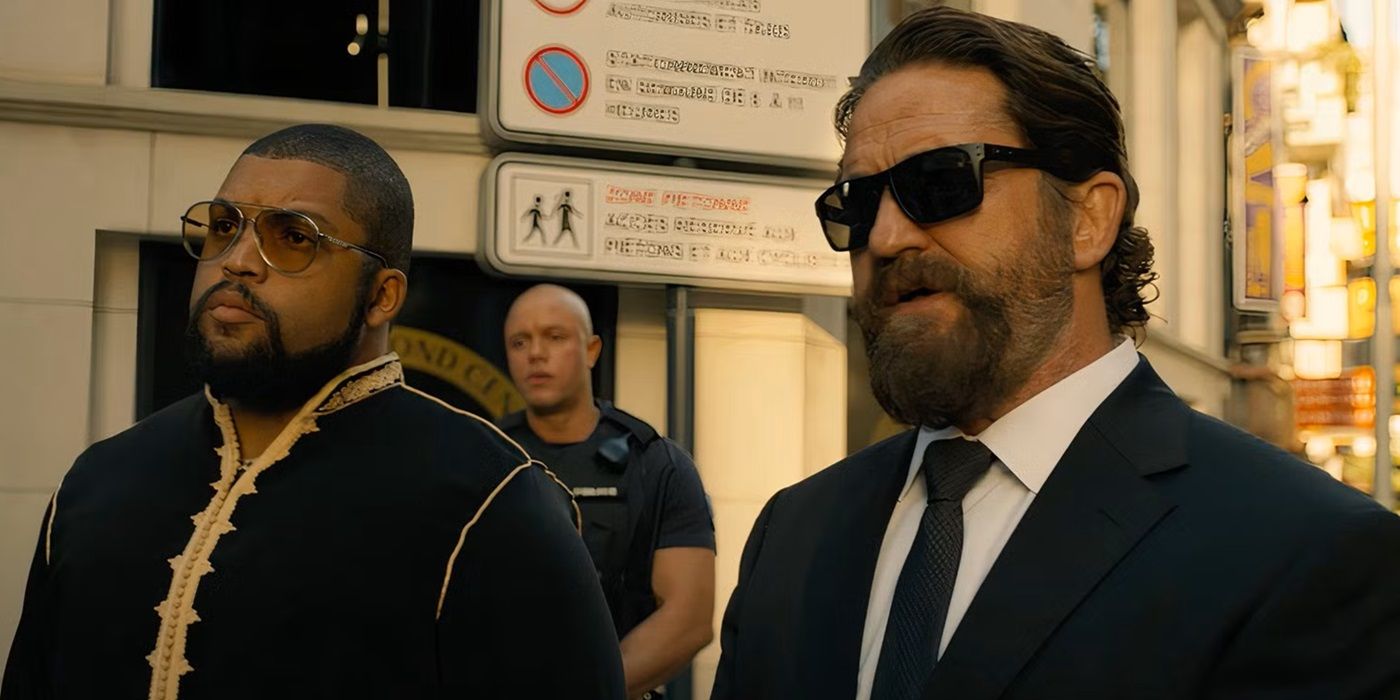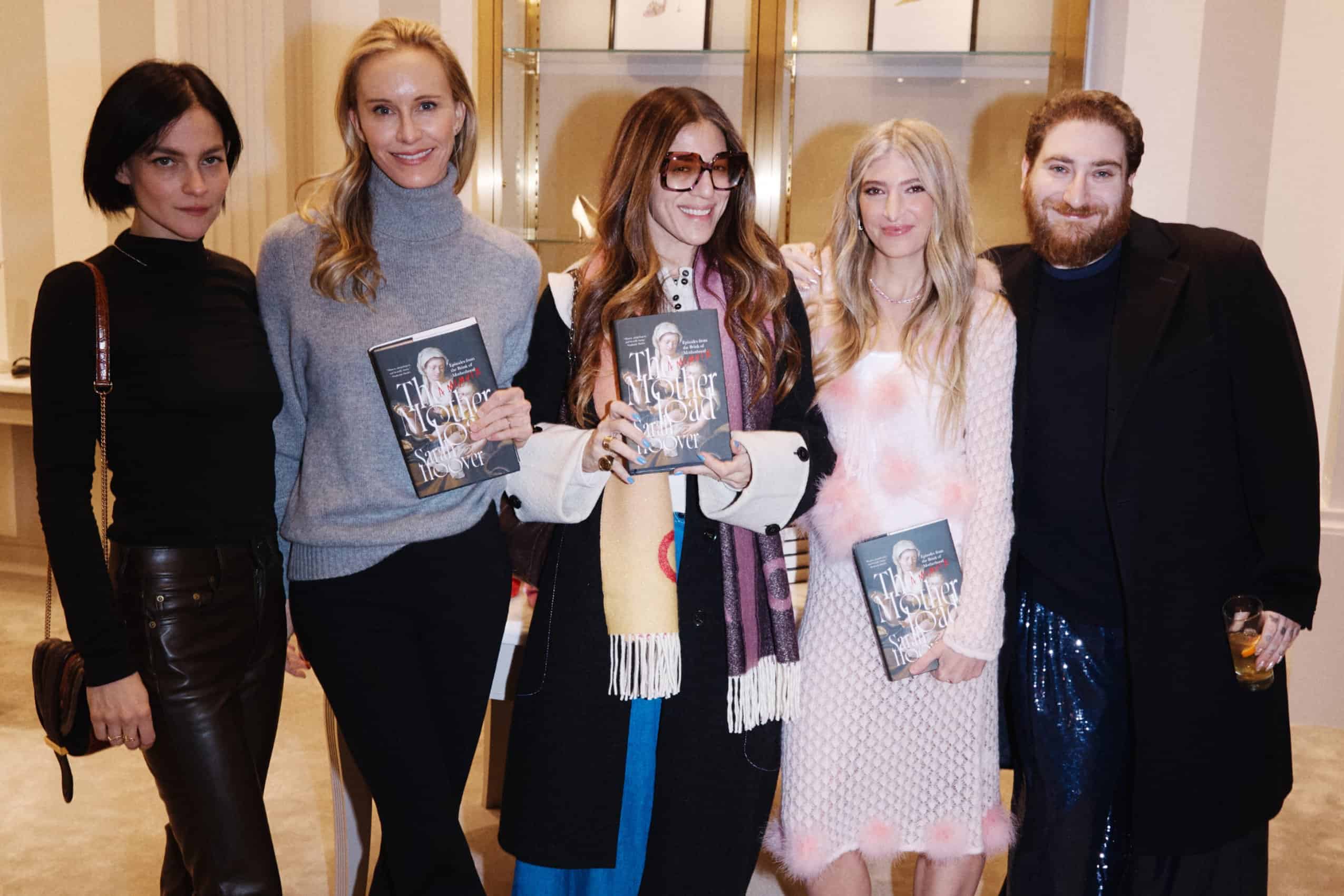The man, the myth, the legend. Wait, are we referring to author Roald Dahl or filmmaker Wes Anderson? Many people grew up reading Dahl’s timeless stories and watching Anderson’s groundbreaking movies. But some might not know Dahl also wrote for adults, like with The Wonderful Story of Henry Sugar, a delightful tale that Anderson has adapted into a unique, modern short film of the same name for Netflix. By modern, we mean that Anderson continues his interest in the literary qualities of film, with this story being told word-for-word by the actors (Ralph Fiennes, Benedict Cumberbatch, Dev Patel, and Ben Kingsley) on screen.
Don’t worry, that last little detail isn’t exactly a spoiler, since you quickly realize this component right as the short film kicks off. Anderson previously adapted Dahl’s work with the Oscar-nominated The Fantastic Mr. Fox, and he’s sure to get Oscar attention for Best Short Live-Action Film with this. Like his other Dahl adaptation, The Wonderful Story of Henry Sugar is equally delicious and heartwarming.
Vintage Wes Anderson Never Fails
Anderson’s movies offer a plethora of powerful A-list performances, and clearly that extends to short-form efforts as well. Asteroid City may have been a disappointment for some, so star power doesn’t necessarily guarantee success. With Henry Sugar, however, the A-listers give committed turns that make the 37-minute end result a resounding success, in more ways than one.
It kicks off with Fiennes looking and nailing the part of Dahl himself, narrating the tale as he moves between his home and the outdoors. Anderson’s The French Dispatch utilized a hilarious technique where the actors would often freeze-frame themselves to recreate a still image of sorts, and in Henry Sugar, Anderson uses similar cheeky tableaus to sensational effect. We watch as Fiennes and others walk through different sets that are simultaneously being changed by on-screen “stagehands” right before our eyes, corresponding with Anderson’s increasing fascination with artifice.
The short film becomes even more theatrical in nature as we watch the principal actors double as different characters throughout. Even with his adult-friendly stories, Dahl never failed to create an imaginative world, and it’s clear with Henry Sugar that Anderson is the perfect man for the job to bring Dahl to live-action life through his inventory of innovative film techniques.
Netflix
After Fiennes finishes his opening narration, Cumberbatch — a first-time Anderson collaborator — takes over and starts reciting Dahl’s words as the titular character, a wealthy but “unpleasant” man who has never worked a day in his life. But then, he stumbles across a book that tells a tale of a doctor (Patel) who once met a mysterious man (Kingsley) who could quite literally see without using his eyes. The story-within-a-story nature of Dahl’s tale echoes the classic postmodern novel Don Quixote, and Anderson also used this kind of technique in his Oscar-winning feature The Grand Budapest Hotel, another Fiennes film, and with Asteroid City.
Other parts of Henry Sugar echo past films and filmmakers — the rapid-fire way in which each character recites their lines is very Aaron Sorkin-esque, if you ask me, and the framing is reminiscent of Jean Renoir’s later films. Plus, the 1.33:1 aspect ratio is a standout component that was previously seen in Darren Aronofsky’s award-winning film The Whale, David Lowery’s Ghost Story, and many more recent films. The list goes on — and in a good way…
Related: 10 Movies Like Wes Anderson’s to Watch if You Love the Director’s Style
Long Live Sir Ben Kingsley!
Netflix
Dev Patel is another newcomer to the Wes Anderson-verse, and it quickly becomes clear that he and Cumberbatch belong in future American Empirical Pictures. That too goes for Richard Ayoade, who plays a fellow doctor opposite Patel, and of course Sir Ben Kingsley. Every actor nails their part in vintage comedic fashion, and it’s a hoot watching Dr. Chatterjee (Patel) narrate — in a deadpan, Wes-Andersonian sort of way — the journal that Sugar stumbled upon. The way we become a part of the fun through Anderson’s fourth wall-breaking storytelling makes the film fly by, even if it technically runs longer than the average short.
Related: All 11 Wes Anderson Movies, Ranked by Visual Style
“There are other ways of sending an image to the brain” is the philosophy behind Imdad Khan (Kingsley), the man who becomes the subject of Chatterjee’s journal. This statement certainly comes off as self-referential, as we can’t help but think how Dahl’s rich texts and Anderson’s experimentation can send crystal-clear images to our minds. Khan enters Chatterjee’s hospital, as the journal dictates, and kindly requests that his eyes be completely bandaged up so that he can show the world his magical “seeing without eyes” talent.
Khan then takes over as “narrator” as he recites his travels to Chatterjee, and we soon learn just how Khan achieved such an impossible gift. Without giving too much away, the “wonderful story” ultimately circles back to Sugar himself. We won’t spoil what he does with the knowledge from Chatterjee’s writings, but it’s relentlessly entertaining. Too bad actors can’t get Oscar nominations for their performances in short films. And on that note, given the tight duration, the film is high worth re-watching almost right away.
It’s exciting to know that Anderson will add more Dahl short stories to the Henry Sugar film anthology down the line. But in the meantime, The Wonderful Story of Henry Sugar is now in select U.S. theaters and will start streaming on Netflix Wednesday, Sept. 27.
You can view the original article HERE.

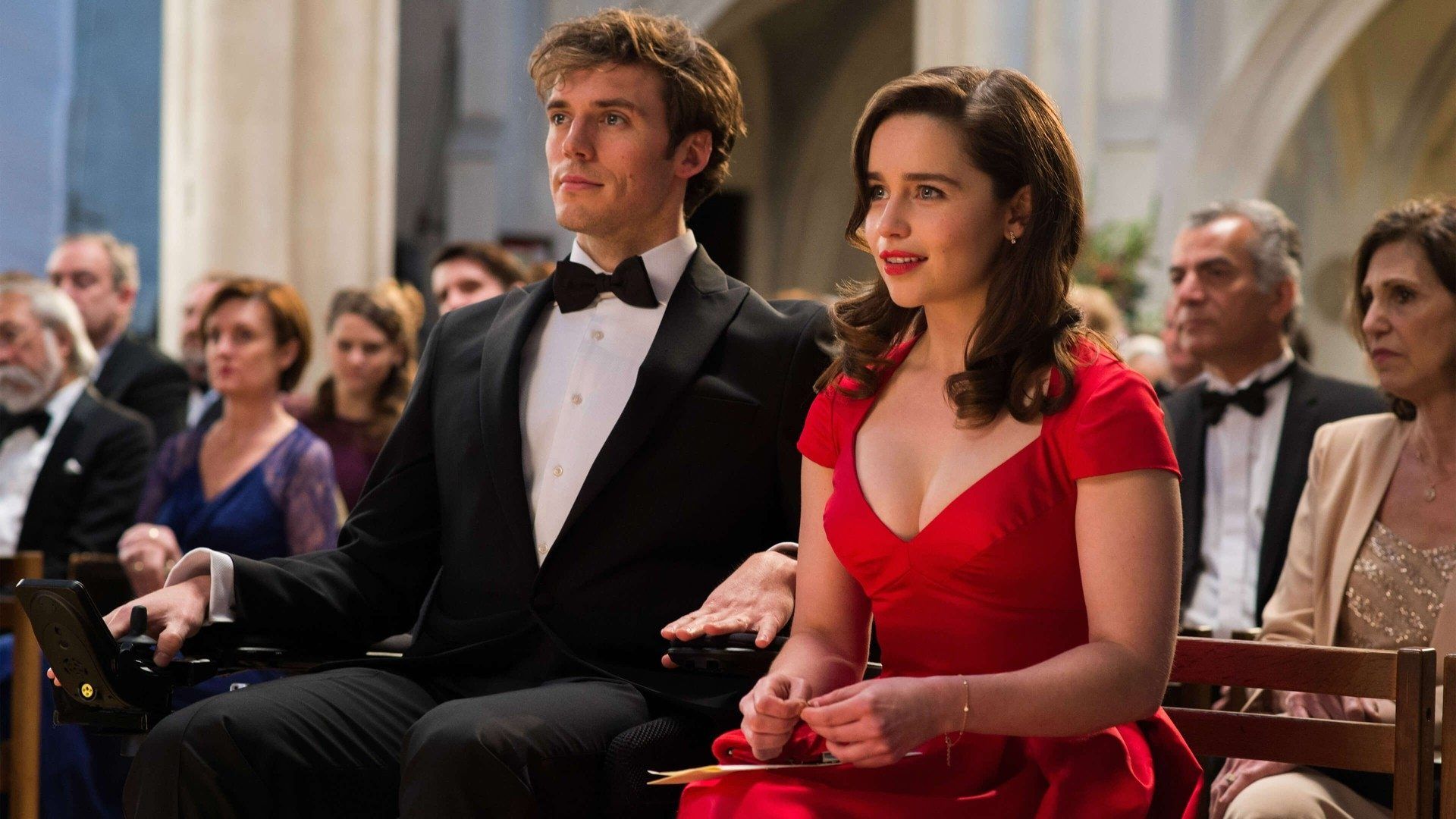

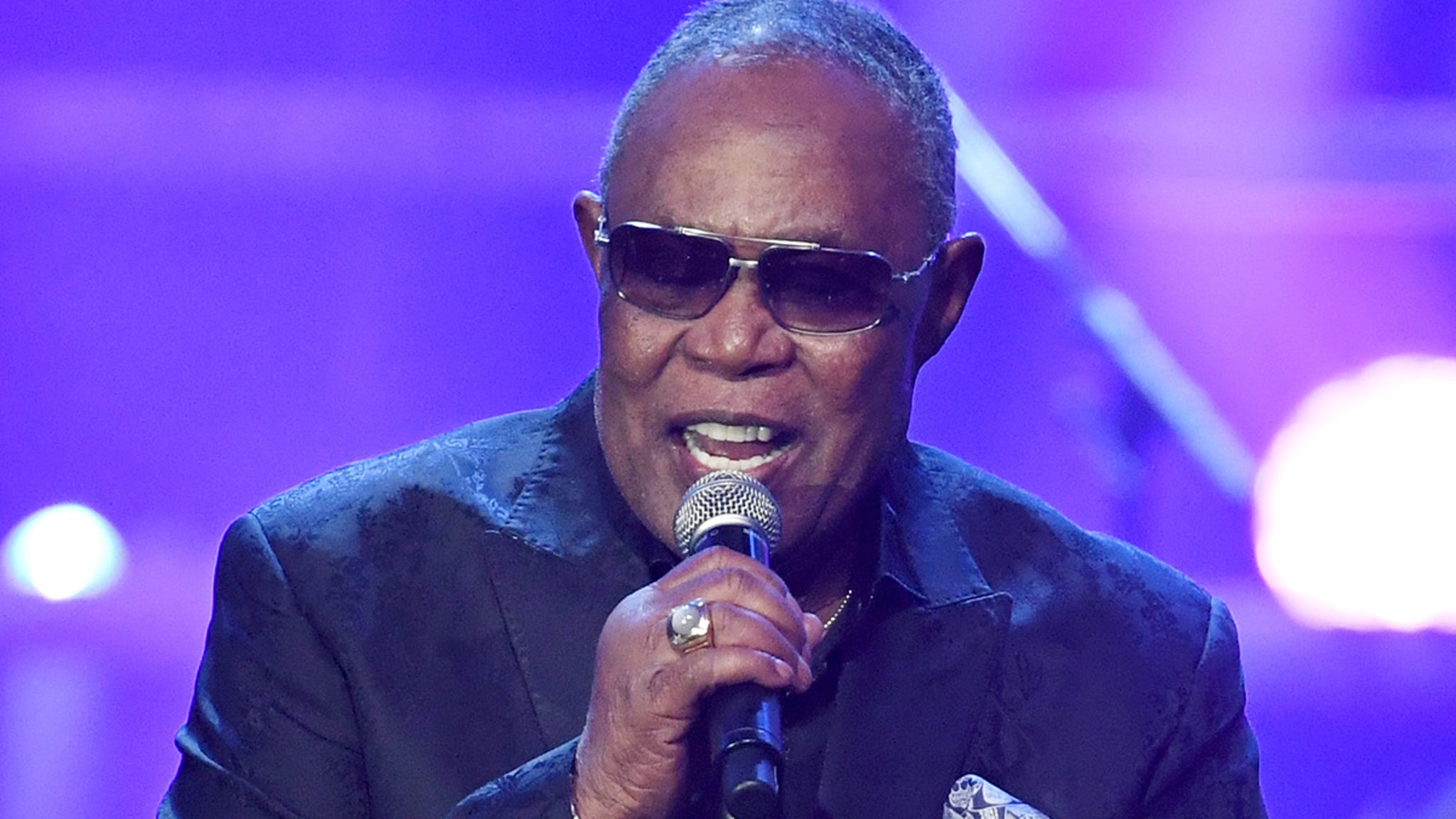
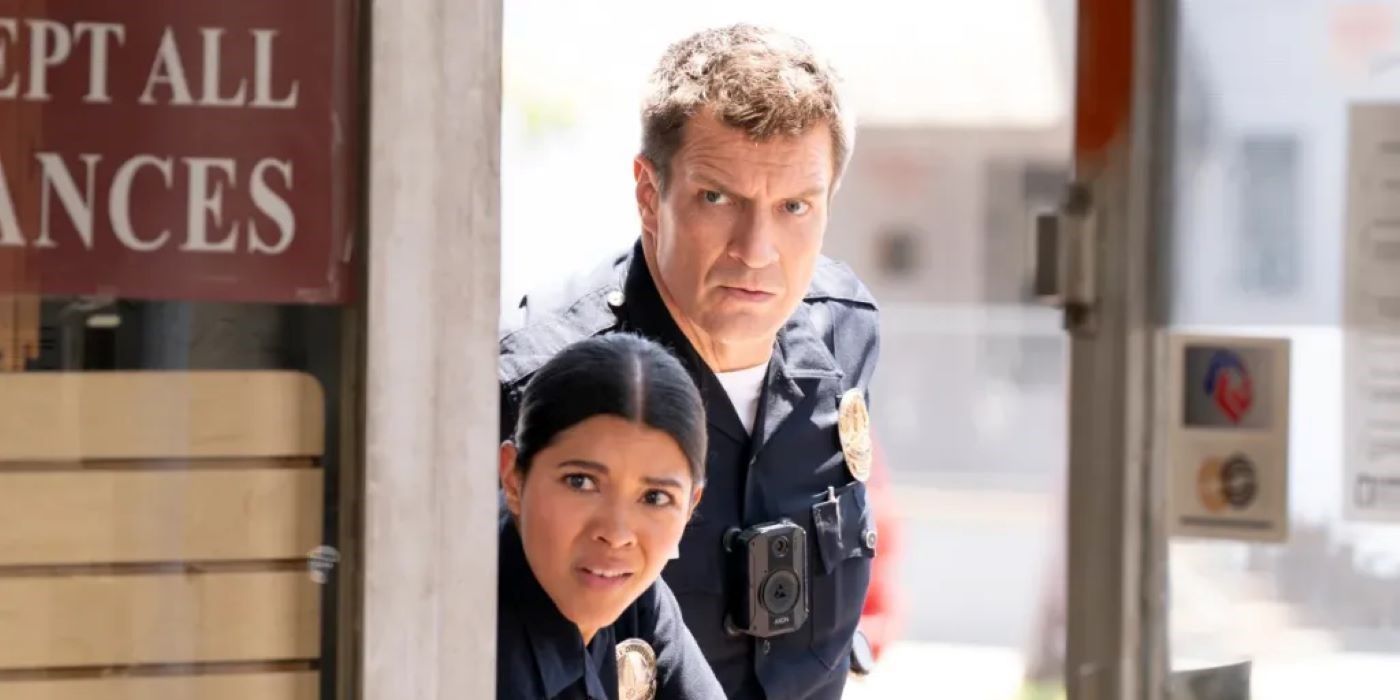


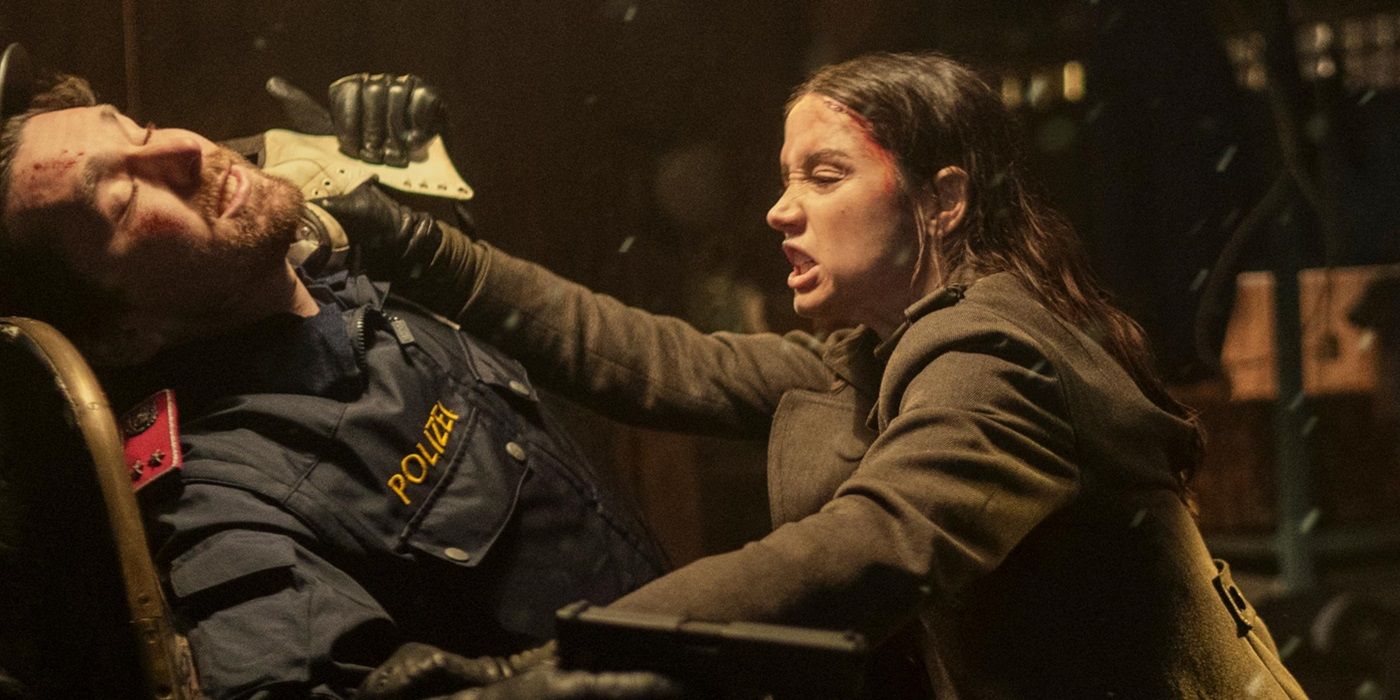
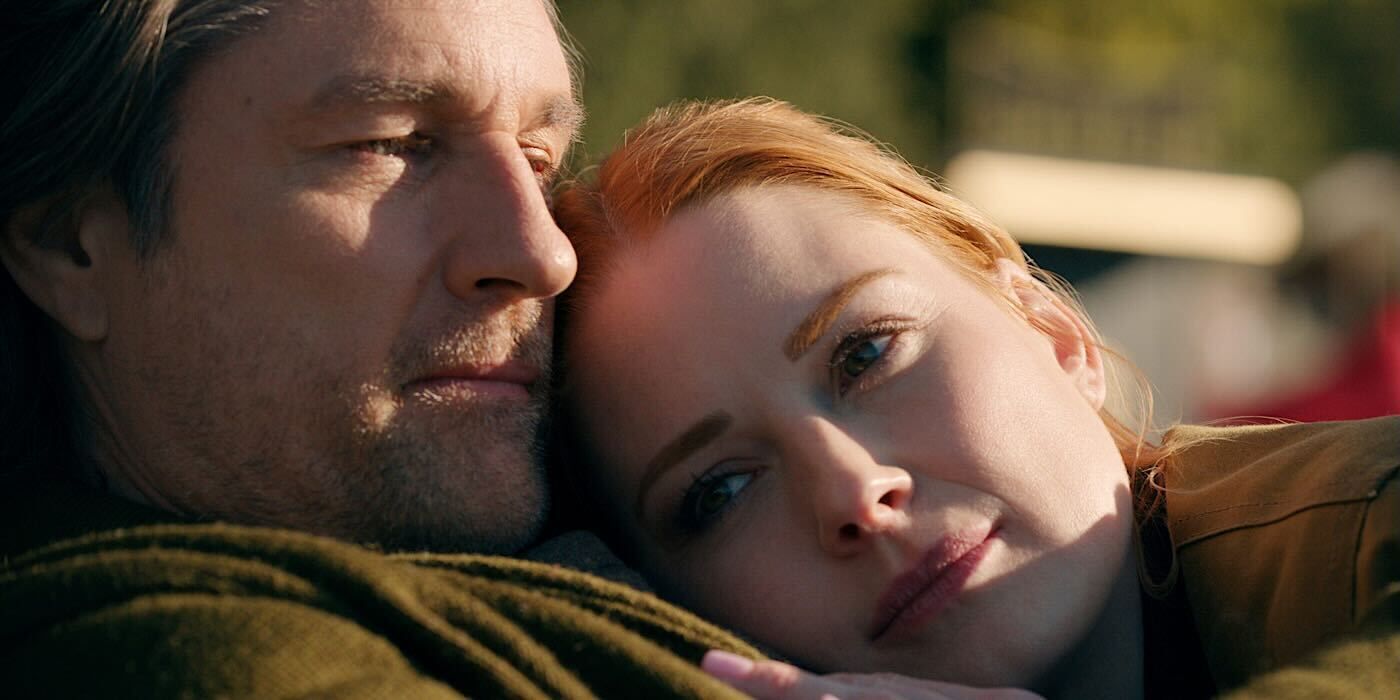

:quality(85):upscale()/2024/11/27/891/n/1922398/123acea767477facdac4d4.08554212_.jpg)
